
As most of us are aware, starting with BizTalk Server 2013 and newer versions, Microsoft BizTalk ESB Toolkit is integrated with the BizTalk Server setup.
The wait is over, BizTalk Server 2020 is out now! On 15th of January 2020, Microsoft announced the release of BizTalk Server 2020. We got an opportunity to install and configure the ESB toolkit using Microsoft BizTalk Server 2020.
While installing and configuring ESB we faced a huge challenge and surprise, that the ESB Portal was missing!!! In this blog, we would like to share our experience with you all that we gained and how we configured the ESB portal.
We would like to start from scratch, right from the installation of ESB in BizTalk Server 2020. However, before that, let’s firstly shortly discuss what the ESB Toolkit is about.
The BizTalk Server ESB Toolkit is an optional component that can be used on top of the BizTalk Server. It provides architectural guidance, and a collection of BizTalk Server and .NET Framework components to simplify the development of an Enterprise Service Bus (ESB) on the Microsoft platform.
An important framework that is part of the ESB Toolkit, is the Exception Framework. This Framework helps is centralized exception management.
For example: during the processing of orchestration, an exception occurs. When you are using the ESB Toolkit, the message that causes the exception will be pushed to a portal of the Exception framework. From that portal, you can analyze the faulty message, fix the message, and have it resubmitted.
The abilities that are provided by the Exception Framework, like editing and resubmitting of messages, are not possible with the core BizTalk Server capabilities. So, by using that framework, you will better be able to deal with unexpected message failures.
Close any programs you have opened.
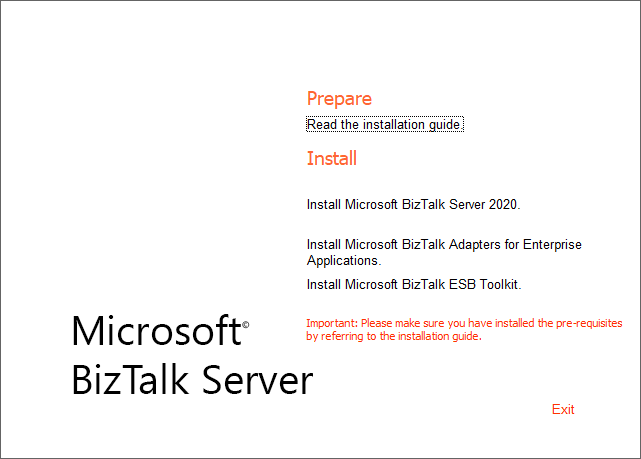

Note: If you observe the installation wizard, you may find the ESB Toolkit version is missing while comparing it with the BizTalk Server 2016.

Using Visual Studio 2019 -> Continue without code -> Extensions -> Manage Extensions -> Install BizTalk ESB Toolkit Itinerary Designer

Note:
- You must configure BizTalk Server before configuring BizTalk ESB Toolkit
- You must run the ESB Configuration Tool as an administrator


Note: At this stage, you can click “Apply Configuration” towards the top of the ESB Configuration Tool to configure the Microsoft BizTalk ESB Toolkit with the default settings. However, if you want to do a custom configuration, you can perform the remaining steps as well. In such a case, the values you specify in the subsequent steps take precedence over the default values.




If you are installing and configuring the BizTalk ESB Toolkit in a single server environment, select File Configuration Source.
If you are setting up a multiple-machine deployment, select the SSO Configuration Source, and then enter the following:
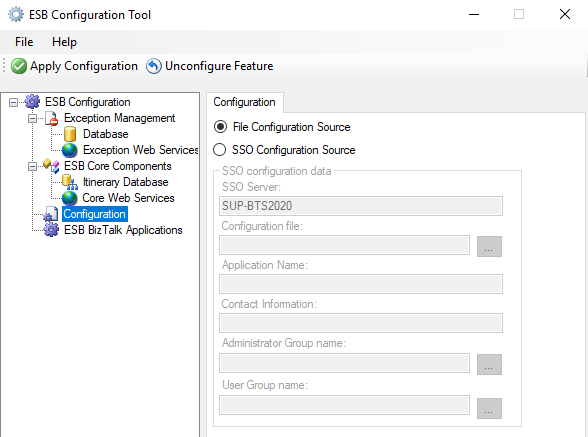


To ensure if the site has been configured correctly, navigate to the folder C:\Program Files (x86)\Microsoft BizTalk ESB Toolkit\Web. Compare the folders and subfolders, and the sites under IIS -> Sites -> Default Web Site.

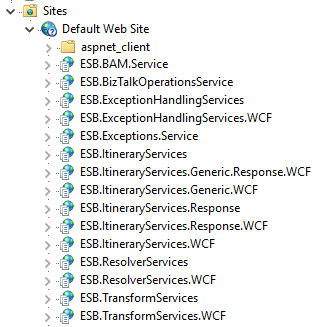
Open the BizTalk Server Administration console and notice that the ESB applications is now installed and present in our console.
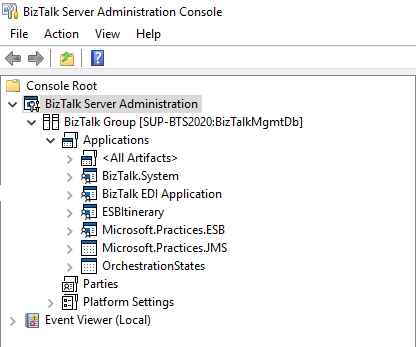
Finally, ensure the availability of the “EsbExceptionDb” and “EsbItineraryDb” in the database.
Once after the installation and configuration of ESB Toolkit, if you have a look at the installation folder to configure ESB Portal, you will find that the file “ESBSource.zip” is missing…!!!
Once after the configuration in BizTalk Server 2016, you will be able to find the ESBSource.zip file. But it is not available in BizTalk 2020.

*Screenshot from BizTalk Server 2016 ESB Toolkit installed folder location
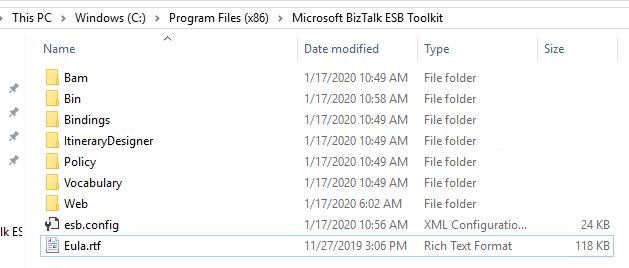
*Screenshot from BizTalk Server 2020 ESB Toolkit installed folder location
But, if you want to use the default ESB portal, you need the “ESBSource.zip” file to create it, or if you have another option, you can build your custom portal. We have compared the esb.config file to check if any changes have been done. When we checked the file, we found out that no changes have been done in the latest file. So, we thought of using the same portal in BizTalk server 2020 that was already used in the BizTalk server 2016.

To be able to use the existing ESB portal, we have copied the “ESBSource.zip” file from BizTalk Server 2016 and pasted inside the BizTalk Server 2020 folder C:\Program Files (x86)\Microsoft BizTalk ESB Toolkit\.
To install the default ESB portal
Note: Leave step 4 and 5 if you have already done it earlier
If you can successfully run the Management_Install.cmd without any error/exception, the portal will be configured. Now when you open Internet Explorer and navigate to http://localhost/ESB.Portal you should see the ESB Management Console home page.

If you face any issues/exceptions when you run the Management_Install.cmd and the portal is not created, follow the below steps.
set-executionpolicy unrestricted
C:\Windows\Microsoft.NET\Framework\v4.0.30319> ServiceModelReg.exe -r –y

Now, without any errors/exceptions, the portal should be configured. Check if the ESB.Portal is available in IIS. When you open Internet Explorer and navigate to http://localhost/ESB.Portal you should see the ESB Management Console home page.
Phew!!! That’s how we configured ESB Portal.
Now we will come to the second option, custom portal…!
Even though the Exception Management framework is very robust and strong, the Exception Management Portal that comes out of BizTalk Server is not that easy to configure as we have experienced.

Firstly, the portal from the ESB Toolkit can be replaced with a portal within BizTalk360. BizTalk360 addresses these challenges in several ways. As with all features within BizTalk360, this portal is protected with security and auditing.
You don’t need to configure the default ESB portal. We want to mention here that a few of our customers haven’t installed the ESB portal.
Instead, they are using BizTalk360’s ESB Portal alone and from the portal, they are performing actions successfully.
To be able to repair ESB Faults, there is an Edit and Resubmit feature in BizTalk360. To make the repair even easier, you can write and associate Knowledge Base articles to the ESB Faults. So, in case of recurring problems, you can simply document the solution in such a KB article and associate it with the ESB Fault, thereby making repairs in the future easier.
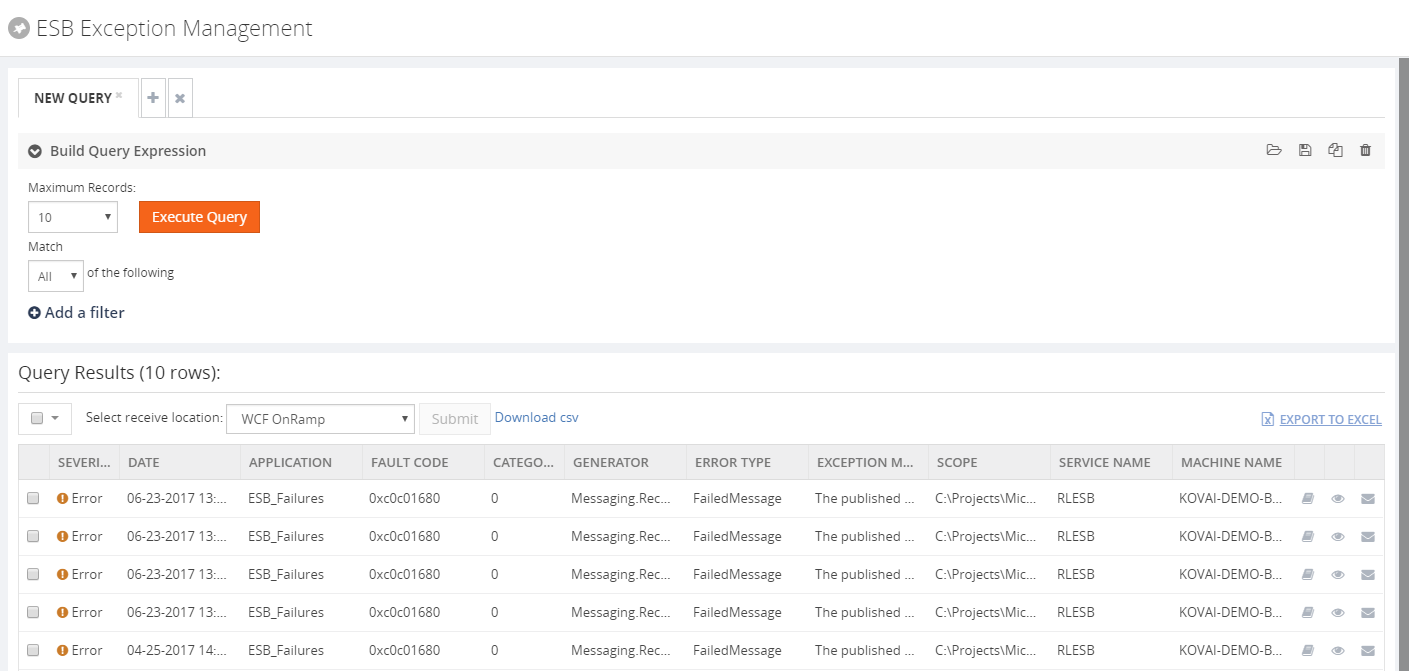
All you need to do to configure the ESB Exception management framework within BizTalk360, is to simply provide the connection string to your ESB exception database, relevant to your BizTalk Environment.
That’s it! You are set (takes about 3 minutes, definitely not more than that).
Check the below blogs to know more about BizTalk360 ESB Portal.
For those of you who are not aware of BizTalk360, I would like to give a short intro and we are excited to announce that after working with Microsoft for the past few months, we are now fully supporting Microsoft BizTalk Server 2020 with our latest release.
BizTalk360 helps you to manage/operate and monitor your BizTalk Server environments. Our team has worked on the v10.0 release for more than one year. Now we have released a new version of BizTalk360 where you will find an even better user experience that enables you to enjoy the latest features that have been developed.
BizTalk360 supports BizTalk Server 2013, 2013 R2, 2016 and now 2020.
Why not give BizTalk360 a try? It takes about 10 minutes to install on your BizTalk environments. Get started with the free 30 days trial.
Read more BizTalk Server 2020 resources
